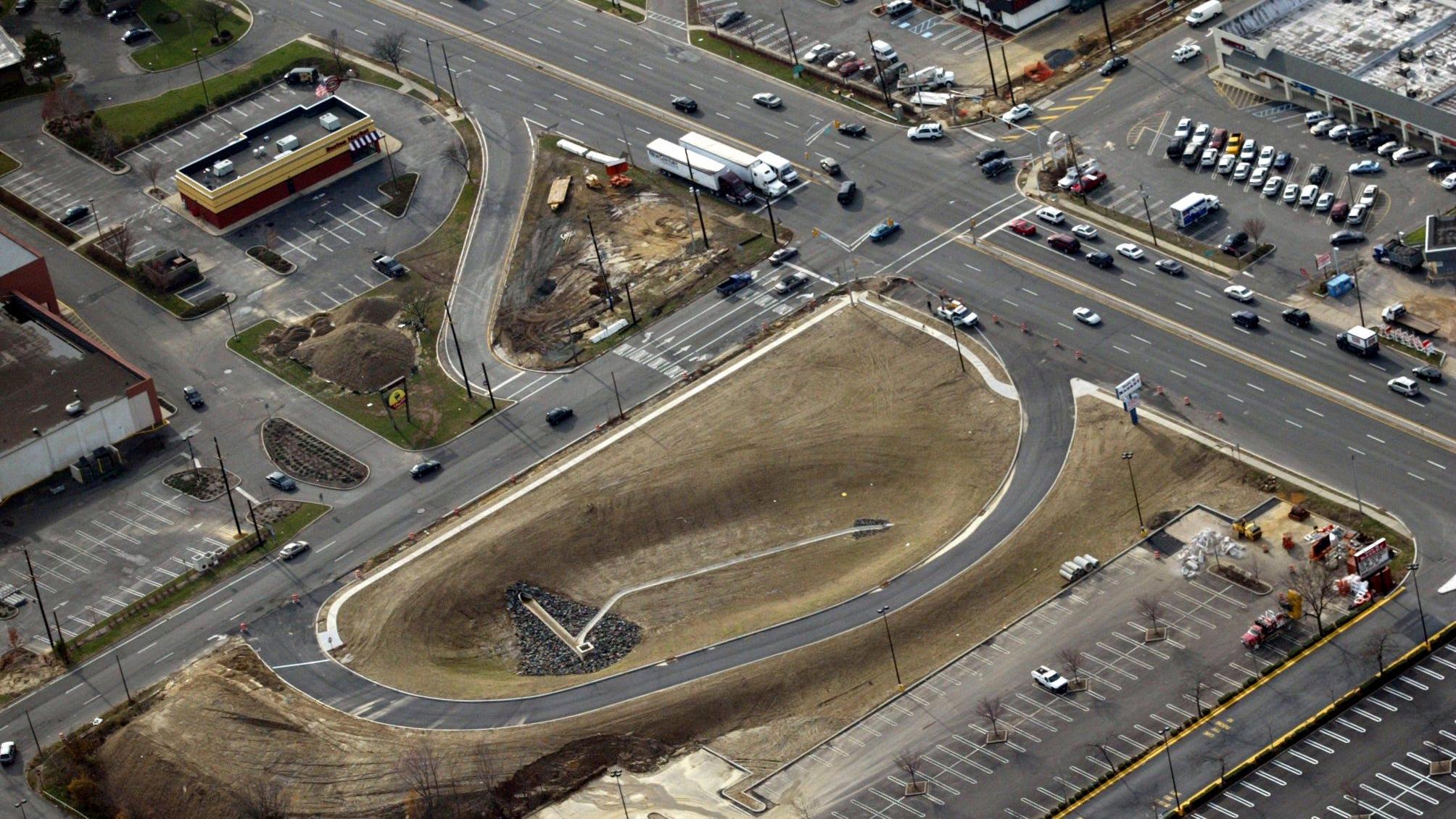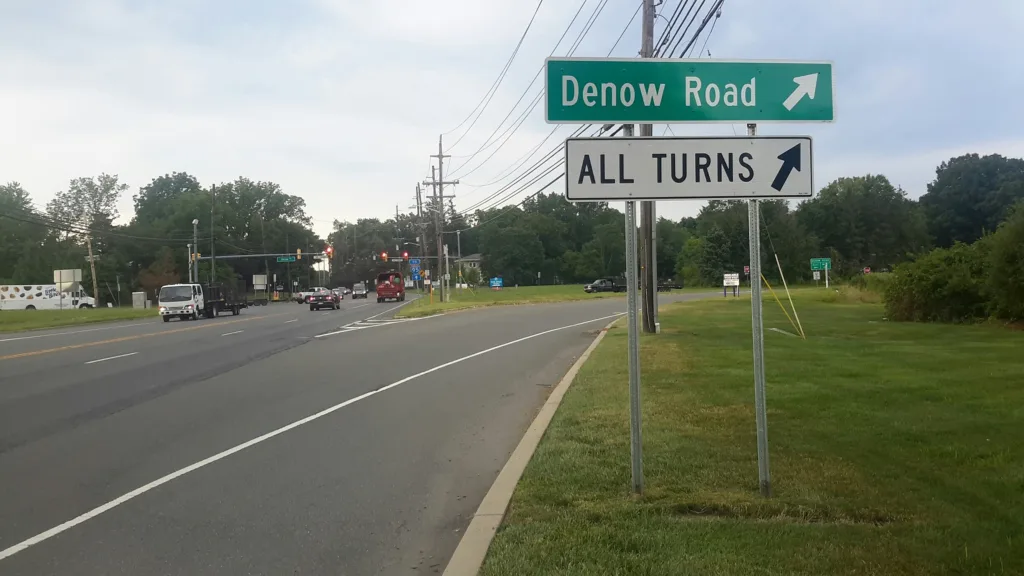Jug handle turns are a unique feature of New Jersey’s roads that have helped alleviate traffic congestion and improve safety on busy roadways. These turns, also known as jughandles, are essentially looped ramps that allow drivers to make a left turn or a U-turn without crossing multiple lanes of traffic.
The history of jug handle turns in New Jersey dates back to 1959 when the first such turn was constructed on Route 46 in Montville. Since then, these turns have become a common sight on many of the state’s busiest highways.
One of the primary reasons for the popularity of jug handle turns is their safety benefits. Left turns and U-turns can be dangerous, especially on high-volume roadways. According to the National Highway Traffic Safety Administration, more than a third of all accidents happen during a turn or within an intersection. By providing a separate lane for turning traffic, jug handles help reduce the risk of accidents and keep traffic moving smoothly.
Another advantage of jug handles is that they can help improve traffic flow by reducing the number of left turns made from a main roadway. Left turns can slow down traffic and cause delays, especially during peak hours. With jug handles, drivers can exit the main roadway and loop around to make their turn, reducing the number of left turns made from the main road.
Jug handles are also designed to accommodate both left and right turns. Instead of turning left from the left lane, drivers exit right into the jug handle and loop back around to go straight or make a right turn. This can help reduce confusion and improve traffic flow, as drivers don’t have to cross multiple lanes of traffic to make their turn.
Jug handle turns are a unique and effective solution to improve traffic flow and safety on New Jersey’s roads. While they may take some getting used to for drivers who are new to the state, they have become a familiar sight for many who call New Jersey home. So, the next time you see a jug handle turn, remember that it’s not just a quirky feature of the state’s roads – it’s also a key part of keeping drivers safe and traffic moving smoothly.
Why Does New Jersey Use Jughandles?
New Jersey uses jughandles to help manage traffic flow on busy roads and highways. Jughandles are essentially turning lanes that allow drivers who are exiting the main road to move into a separate lane befre making their turn. This helps to reduce congestion and improve safety by allowing drivers to slow down and exit the main road without disrupting the flow of traffic in the other lanes. Jughandles are particularly useful in areas with heavy traffic or limited space for turning, as they allow drivers to make turns without crossing multiple lanes of traffic. The first jughandle in New Jersey was constructed in 1959 on Route 46 in Montville, and the design has since become a common feature on many roads throughout the state.

Why Does New Jersey Have No Left Turns?
New Jersey has implemented left-turn bans on high-volume roadways as a safety measure to prevent accidents and reduce traffic congestion. According to the National Highway Traffic Safety Administration, more than one-third of all accidents occur during a turn or within an intersection. By prohibiting left turns, the state aims to eliminate the risks assciated with turning across multiple lanes of traffic. Left-turn bans also help to keep traffic flowing smoothly by reducing delays caused by left-turning vehicles, which often slow down or stop traffic behind them. Therefore, the implementation of left-turn bans in New Jersey is a proactive approach to enhance road safety and improve traffic flow.
Why Should The Jug Handle Turn Be Avoided If At All Possible?
The jug handle turn should be avoided if at all possible because it can be confusing and dangerous for other drivers on the road. When a driver makes a jug handle turn, they first veer left before turning right, which can cause confusion for drivers behind them who may think they are making a left-hand turn instead of a right-hand turn. This confusion can lead to accidents and collisions, partiularly if drivers in the right lane are not paying attention or are not aware of the jug handle turn. Additionally, the jug handle turn can disrupt the flow of traffic and cause delays for other drivers on the road. Therefore, it is best to avoid making jug handle turns and instead use alternative routes or methods of navigation that do not require this type of maneuver.
What Is A Jughandle In New Jersey?
A jughandle is a type of roadway configuration commonly found in New Jersey. It is a safe way to make a left turn, and is designed in the shape of a jughandle coming off the main road. Instead of making a left turn from the left lane, drivers exit right into the jughandle, which loops back around so the driver can go straight. This design helps to reduce the risk of head-on collisions and allows for a smoother flow of traffic. In addition to left turns, right turns can also be made using the jughandle. This type of roadway configuration is unique to New Jersey and is often used to manage traffic in busy intersections and highways. the jughandle is an important part of New Jersey’s transportation infrastructure and helps to keep drivers safe on the road.

Conclusion
The jug handle turn is a unique type of intersection that has become a staple in New Jersey’s roadways. They were first constructed to help traffic flow by allowing drivers who were exiting to remove themselves from the faster-travelling lanes for continuing travel. Jughandles are a safe way to make a left turn, and are shaped like a jughandle coming off the main road. Instead of making a left from the left lane, drivers exit right into the jughandle, wich loops back around so the driver can go straight. Right turns are also made using the jughandle. The main advantage of the jug handle turn is that it helps reduce the number of accidents that occur during left-turns or within intersections. While some drivers may find them confusing or frustrating, they ultimately provide a safer and more efficient way of navigating New Jersey’s roads. the jug handle turn has become an important part of New Jersey’s transportation infrastructure and will likely continue to be so for years to come.
